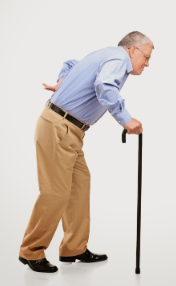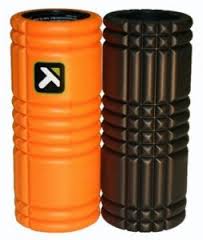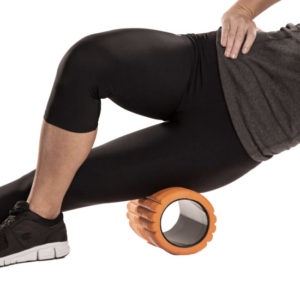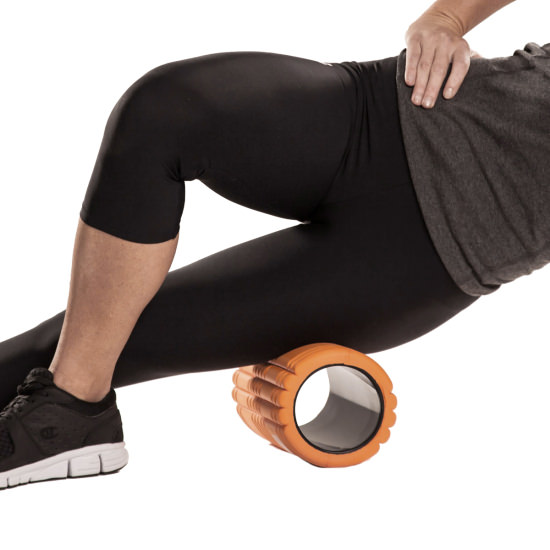There is a lot more to foam rolling than laying on a roller and making it hurt. Foam rolling is a way to do self myofascial release. Our fascia is an endless web of connective tissue that turns from an almost liquid state when we are kids to an almost bone like state when we stop moving. Fascia’s job is to do what we ask of it, so if we ask it allow us to move like we did when we were kids, it will stay soft and pliable. If all we ask it to do is support us in our common daily activities then it will tighten and harden to hold us in that pattern. Today our common activities have us in an almost constant state of flexion….sitting to eat, brushing our teeth, driving, sitting in front of the computer, sitting to watch TV, sleeping on our side and, most sports put us in flexion. This is a very common posture we see:


After time, fascia shortens to hold us there and before you know it you need a walker to get around. Not because you’re old but because that’s all you asked of fascia.
Stretching and foam rolling are two ways to quickly help you change your fascia. Remember, fascia only does what you ask it to do, so if you start asking it to do different things it has to respond. Ask for a little more movement and a little more movement each day versus a little less and a little less. NO MATTER WHAT!
When you get familiar with your foam roller you can learn to send new commands to your fascia. The pressure created when you put some of your weight on a roller causes a mild stretch in the tissue. When you find and hold position on a tender area you can “short circuit” the pain spasm pain cycle that causes muscles to tighten which allows fascia to shorten. There is really no right or wrong way to roll. Our favorite way is to roll through the tissue until you find a tender area and then stay there until it lets go or to the count of twenty. If it doesn’t let go keep moving and come back to that spot and give it a second attempt.
We have found that the Trigger Point GRID is by far, our favorite roller out there. It’s solid and compact – small enough to travel with.


It helps to know what you are rolling. We have talked to a lot of people over the 15+ years we have been in business and the most common are people roll is their Illio-Tibial (IT) Band. Unfortunately, rolling the ITBand may not be a good thing. That band usually gets tight on people because the small glutes and the Tensor Fascia Latae have become lazy and tight which puts a huge demand on the ITBand. We have found that getting these lateral hip muscles working right lets the ITBand relax all on its own.
Rolling is only ½ of the answer. Once you have rolled to release some of the tension, its time to teach the fascia a new pattern and that’s where stretching comes in. Follow all your rolling and soft tissue work with Active Isolated Stretching to re-educate the muscle fibers. Keep your eyes out for our instructional videos to learn how to do this properly. Our short little instructional videos are coming soon!!












No Comments